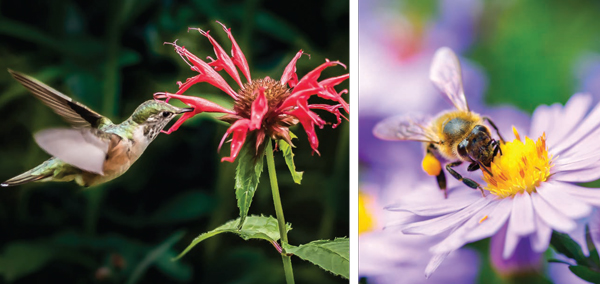
With recent declines in pollinator populations, more gardeners are taking care to plant items that attract and sustain these essential creatures. Over 75 percent of the world’s flowering plants depend on pollination to reproduce, making it as important as sunlight, soil and water to plants. These plants include up to three quarters of our food sources as well as plant-based medicines we depend on, so in keeping the pollinators fed, we are contributing to keeping ourselves successfully sustained as well.
Pollinators are not just limited to bees, but include butterflies, small mammals, moths, flies, beetles, birds and even bats. Adding plants that attract pollinators means maintaining a healthy biodiversity in your yard which benefits the surrounding area while keeping your yard in bloom throughout the seasons. Thankfully, many of the plants favored by pollinators are native perennials, which means they are fairly low maintenance once they are established in your garden. Additionally, many of the plants preferred by pollinators are not exactly favorites among the deer population, decreasing the possibility of your yard being an all-you-can-eat deer buffet. Consider planting a buffer of pollinator-attracting shrubs, plants and trees near the shoreline of your lake property instead of grass; this helps with runoff, protecting water quality while preventing erosion and creating activity by pollinators along the shore.
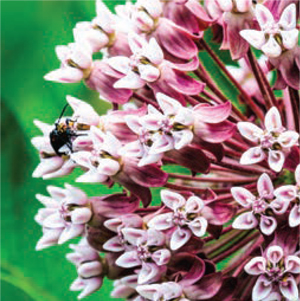 A welcoming yard
A welcoming yard
Planting a pollinator garden has a few simple rules: plant in clumps, plant a variety of shapes and colors, and choose plants that flower at different times of the year to offer a variety of nectar and pollen sources. You should also consider a few areas of habitat; some tall grasses or brush piles as well as bare spots of ground are very attractive real estate to various pollinators. You might also consider adding bird houses around your yard to help create a welcoming habitat. Avoid pesticide use, as that can harm the pollinators. A mix of plantings will attract not just pollinators, but pests as well as their predators, creating a whole little self-contained ecosystem in your yard.
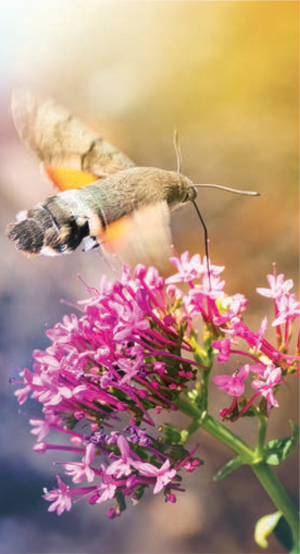 Different pollinators are attracted by different smells and colors. Butterflies prefer red and purple flowers with a faint but fresh odor, while hummingbirds prefer scarlet, orange, red or white tubular shaped flowers with no distinct odor. Bees prefer white, yellow and blue flowers with fresh, mild or pleasant odors. Flies like green, white or cream flowers with little odor or brown and purple flowers with putrid odors, while bats like dull white, green or purple flowers that emit musty smells at night.
Different pollinators are attracted by different smells and colors. Butterflies prefer red and purple flowers with a faint but fresh odor, while hummingbirds prefer scarlet, orange, red or white tubular shaped flowers with no distinct odor. Bees prefer white, yellow and blue flowers with fresh, mild or pleasant odors. Flies like green, white or cream flowers with little odor or brown and purple flowers with putrid odors, while bats like dull white, green or purple flowers that emit musty smells at night.
Milkweed is perhaps one of the best known pollinator-attracting plants because it is the sole host plant for the struggling monarch butterfly. Named for the sticky white sap that oozes from the leaves when they are damaged, there are over 100 species of this perennial native to the U.S. and Canada. Three good all-around choices for your garden are common milkweed, swamp milkweed and butterfly weed. Most milkweeds require full sun and will self-seed readily, making them an almost effortless addition to your garden.
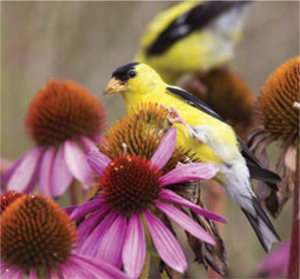 There are far more plants to consider beyond milkweed, though, in setting out to attract pollinators, with many of them attracting more than one type of pollinator. Wild indigo, Virginia spiderwort and foxglove are among spring-blooming pollinator feeding plants. Purple coneflowers, yarrow, bee balm, St John’s wort, lobelia, phlox, black-eyed Susans and mountain mint keep pollinators fed in the summer months, while Joe Pye weed, goldenrod and asters bloom into the fall. There are also a number of native shrubs and trees that can be planted to help sustain pollinators, including mountain laurel, chokeberries, winterberries, elderberries, spicebush, witch hazel and several varieties of rhododendrons and viburnums.
There are far more plants to consider beyond milkweed, though, in setting out to attract pollinators, with many of them attracting more than one type of pollinator. Wild indigo, Virginia spiderwort and foxglove are among spring-blooming pollinator feeding plants. Purple coneflowers, yarrow, bee balm, St John’s wort, lobelia, phlox, black-eyed Susans and mountain mint keep pollinators fed in the summer months, while Joe Pye weed, goldenrod and asters bloom into the fall. There are also a number of native shrubs and trees that can be planted to help sustain pollinators, including mountain laurel, chokeberries, winterberries, elderberries, spicebush, witch hazel and several varieties of rhododendrons and viburnums.
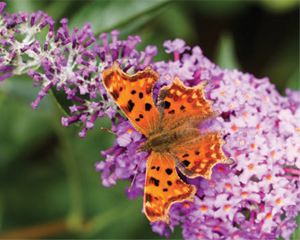 Of course, there are other plants, even though not native or perennial, that are also popular among pollinators, including sunflowers, cosmos and zinnias, all grown easily from seed. Cosmos and zinnias are a fantastic cut flower, lasting all season in the garden with their colorful blooms. Holy Basil, an Asian relative of the more well known Italian variety, is a wildly popular favorite among bees. A fragrant plant also known as tulsi, Holy Basil is considered a sacred plant by Hindus and is used in a variety of homeopathic remedies, and is also quite lovely as an iced tea.
Of course, there are other plants, even though not native or perennial, that are also popular among pollinators, including sunflowers, cosmos and zinnias, all grown easily from seed. Cosmos and zinnias are a fantastic cut flower, lasting all season in the garden with their colorful blooms. Holy Basil, an Asian relative of the more well known Italian variety, is a wildly popular favorite among bees. A fragrant plant also known as tulsi, Holy Basil is considered a sacred plant by Hindus and is used in a variety of homeopathic remedies, and is also quite lovely as an iced tea.
 For the birds
For the birds
There has been an effort in recent years to attract purple martins to the Smith Mountain Lake area. Migratory birds, martins are the largest member of the swallow family, whose diet consists of insects, particularly flying ones that include stink bugs, Japanese beetles, cicadas, mosquitos and wasps. The birds winter in South America, coming to North America in late winter/early spring to nest and mate, arriving in Virginia from March to April. They are dependent on humans to create habitat for them east of the Rockies, in a habit that is believed to go back hundreds of years to Native Americans, before European settlers discovered the Americas. Friends of Smith Mountain Lake State Park have of a small colony of purple martins set up near the Discovery Center in the park where they also offer classes in how to attract the birds to your property.
Supporting pollinators helps keep ourselves and our native world healthy and happy. Adding pollinator-attracting plants to the landscape of your Smith Mountain Lake home works to help preserve the natural beauty of the lake, which is part of what probably attracted most of us to the lake to begin with. ✦
